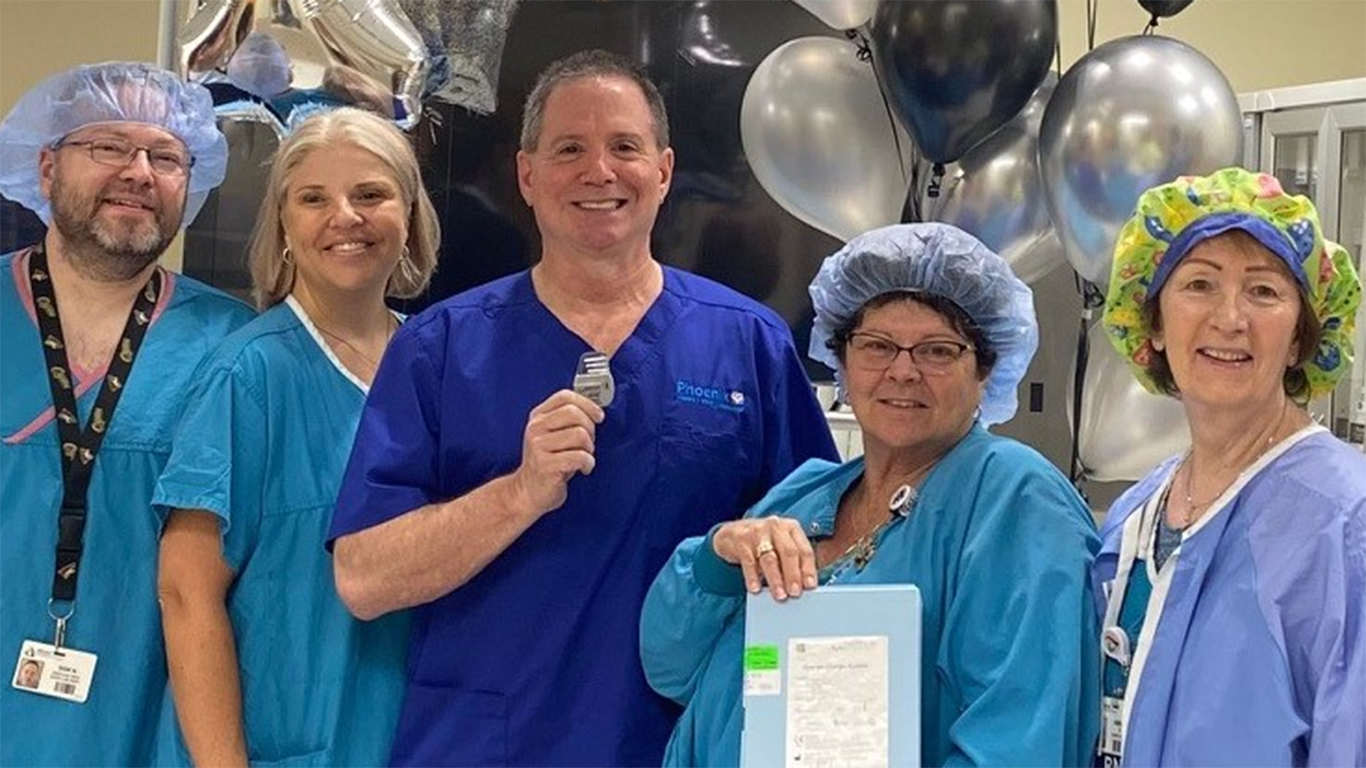This week is Heart Failure Awareness Week. Congestive heart failure is a chronic condition that limits the heart’s capacity to pump enough blood to deliver the oxygen and blood that the body needs.
Heart failure does not mean your heart has stopped, but it does require medical attention. It can be managed with medication in some patients, others may consider implantable devices to help manage the condition.
LEARN MORE: This is why Scottsdale ranks as No. 8 hardest-working U.S. city
Abrazo Arrowhead Campus is now offering the Optimizer Smart Mini System for treating patients experiencing moderate to severe congestive heart failure symptoms. Similar to a pacemaker, the device delivers precisely timed electric pulses called cardiac contractility modulation (CCM) therapy.
Patients receiving CCM therapy may be helped in reducing symptoms such as overwhelming shortness of breath and fatigue. The device is rechargeable with an external system held over the implant once a week.
What is Heart Failure?
In heart failure, fluids can build up around the heart, making it harder to pump efficiently. The body also tries to make up for heart failure by narrowing the blood vessels to keep the blood pressure up, as well as by diverting blood away from the brain, the heart and other organs and tissues like your kidneys.
As blood flow out of the heart slows, blood returning to the heart through the veins backs up, causing swelling, most often in the legs and ankles. Fluid can also collect in the lungs and cause shortness of breath.
How does Optimizer work?

After implantation, the physician custom-programs and activates the device for the patient. The device then begins sending electrical pulses to the heart muscle for a total of 5-7 hours a day, in one-hour treatments separated by regular intervals. The patient charges the device one hour per week using an external charger. The Optimizer device is expected to last at least 20 years without replacement.
“The Optimizer system includes an implantable stimulation device similar in size to a pacemaker with an external charging station. The device is implanted in a small pocket under the skin of the upper chest, along with commercially available pacemaker leads that are placed in the heart’s right ventricular septum, while the patient is under light sedation,” explained Dr. Andrew Kaplan, an electrophysiologist on the medical staff at Abrazo Arrowhead Campus.
“The implant treats heart failure in a way that helps to restore functionality and vitality to patients. The procedure doesn’t require open-heart surgery and most patients can return home soon after the implant is complete. Plus, most patients are able to return to everyday activities shortly after the procedure,” noted Dr. Kaplan.
For more information about cardiovascular services at Abrazo Health hospitals, to take a free health risk assessment or to find a doctor, visit AbrazoHealth.com.




